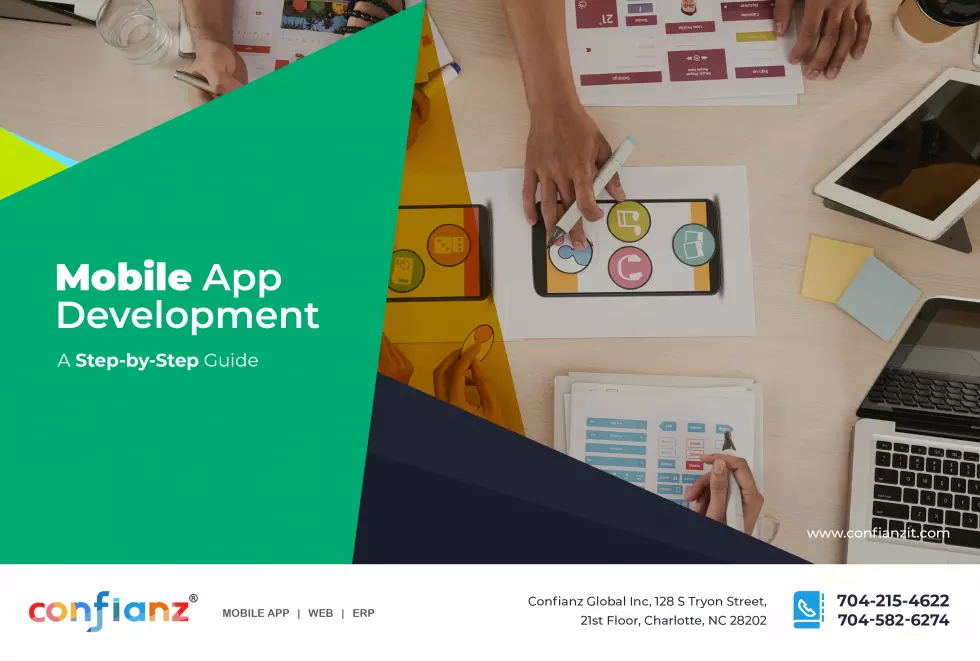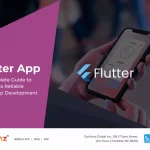With smartphones becoming ubiquitous, companies and startups are developing apps to meet the needs of consumers. But creating an app is a huge undertaking, and it can be challenging to find a place to start.
Before you and your team jump into development, you need to break the process down into manageable pieces, so you don’t find yourself with a half-baked app and no idea what to do next.
This article provides a step-by-step guide on how you can create a mobile app from scratch!
Stage 1: Pre-Planning
Everyone likes to jump right into a new project, but there are a couple of things to establish first.
1. Funding – Are you going to use loans? Angel investors? Your savings? GoFundMe? Apps take time and money, so you need to figure out how you’ll fund your app development before you get too far.
2. Team – Is this a solo venture? Are you working with a large team? A little team? Are all your bases covered? What kinds of programming languages do you and your team know? Asking these questions early in the process can help you create a team that works for you.
3. Time Frame – Largely based on the amount of funding you think you can secure, what is the time frame for this project? It’s also a good idea to break down app production into shorter, more manageable steps so you can make sure you’re on track.
Stage 2: Brainstorming
Like all good things, your app will start with an idea. Beginning with the plan of “making an app” will be way too vague for you to begin with. Instead, you should first figure out the central problem that your app is solving.
Your app can be the answer to a need from inside the company or your customers’ needs. Talk to potential app users to determine what features they would want.
Once you’ve established the basic concept behind your app, there are still a few things to take care of before you start getting your hands dirty.
- What will your app look like? Apps are half function and half form. Therefore, you need to make some mockups of what the app’s design will look like.
- Get feedback! You may have designed the app to solve a specific problem, but it’s up to the consumer to decide if it actually does. Use online surveys, focus groups, and polls with your friends and family to ensure you’re getting off on the right foot.
- Get a read on the competition. There will likely be apps in the same vein as yours, so what gives yours an edge?
- Research your target audience. Who exactly is this app for, and what are they looking for in an app? For example, are they more likely to use Android or iOS? What other apps do they currently use?
Now, after establishing all that, development can finally start on the actual app!
Stage 3: Wireframe
Once you know where you’re headed, it’s time to create a wireframe of your app. Wireframes are digital mockups of your app. Essentially, a wireframe is an app without functionality.
Wireframing is the perfect time to get a rough feeling for the aesthetic that you’re going for. Decide fonts, art style, and animations. Your target demographic will be the guiding influence here.
Keep accessibility in mind when you’re thinking through the look of the app. For example, fonts should be easy to read. Specific colors are worse for colorblind people.
Apps are all about your user’s experience, so it makes sense to let the appearance of your app guide development.
Stage 4: UI
Speaking of user experience, wireframes are a great time to think through the flow of your app.
How will users interact with your app? Where will the menus go? How quickly will they be able to get to what they’re looking for?
Never let your app get so convoluted that people can’t navigate it. Users are always happy to delete apps that aren’t working for them, so you want to make sure your app delivers on its promise.
Stage 5: MVP
Once you have your features, UI, and wireframe nailed down, it’s time to start coding.
You may have heard this term thrown around before, but MVP stands for minimum-viable-product. This means the most basic, bare-bones version of your product that works.
When you’re in the first stages of development, always be working toward an MVP.
It’s the proof of concept that can get you more investors. Your MVP is also extremely valuable for getting feedback from beta testers. It’s one thing to get peoples’ thoughts on your ideas and a totally different thing to get their response to your actual app.
An MVP is often what is the initial launch of an app. This lets developers get the app out as soon as possible and then work with the app users to add and perfect features as needed.
Stage 6: Post-Launch
Once your initial launch is live, the process is far from done. Think of the initial launch as the first draft of your app. Supporting and refining your app should be your top priority once it’s in the store.
Get a system to squash bugs as soon as they arise. Do this by making it easy for your users to report bugs and respond promptly to these reports.
And constantly be updating your security! Nothing will lose the faith of your customers like a breach of security, especially if your app requires location services or sensitive information of any kind.
Bottom Line
Making a successful app is not for the faint of heart. But if you plan right and break the process down into manageable steps, there’s no reason why you can’t have a mobile app that you can be proud of!
Want to Hire App Developers for Your Project?
Hire Android App Developers / iOS App Developers from Confianz for your Mobile App Development projects. Confianz Global INC is a noted mobile App development Company in USA.
If you’ve got an idea but aren’t feeling confident about the path forward, we’re here to help! At Confianz, we have a team of developers ready to help at every stage. So contact us today to get your mobile app off the ground!







